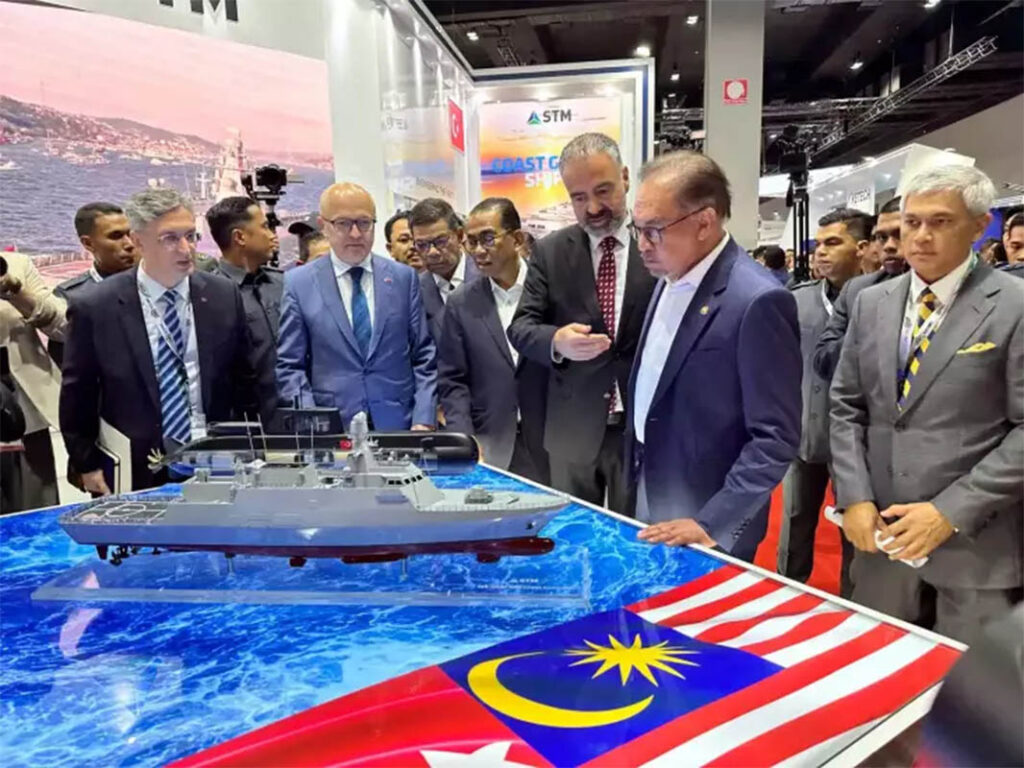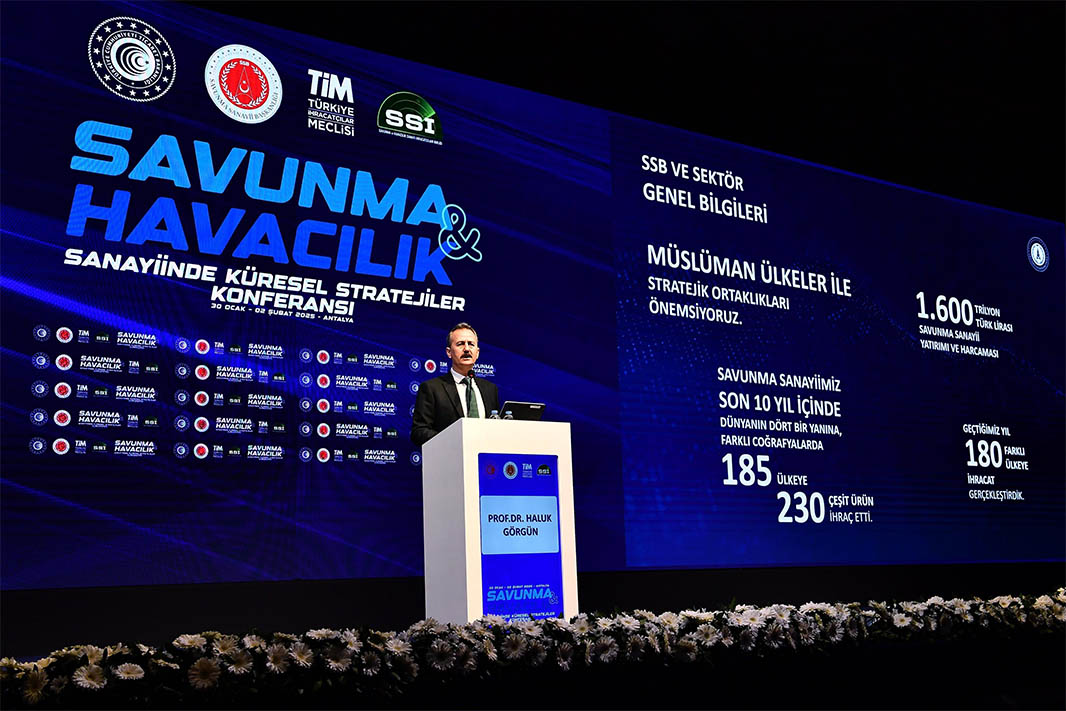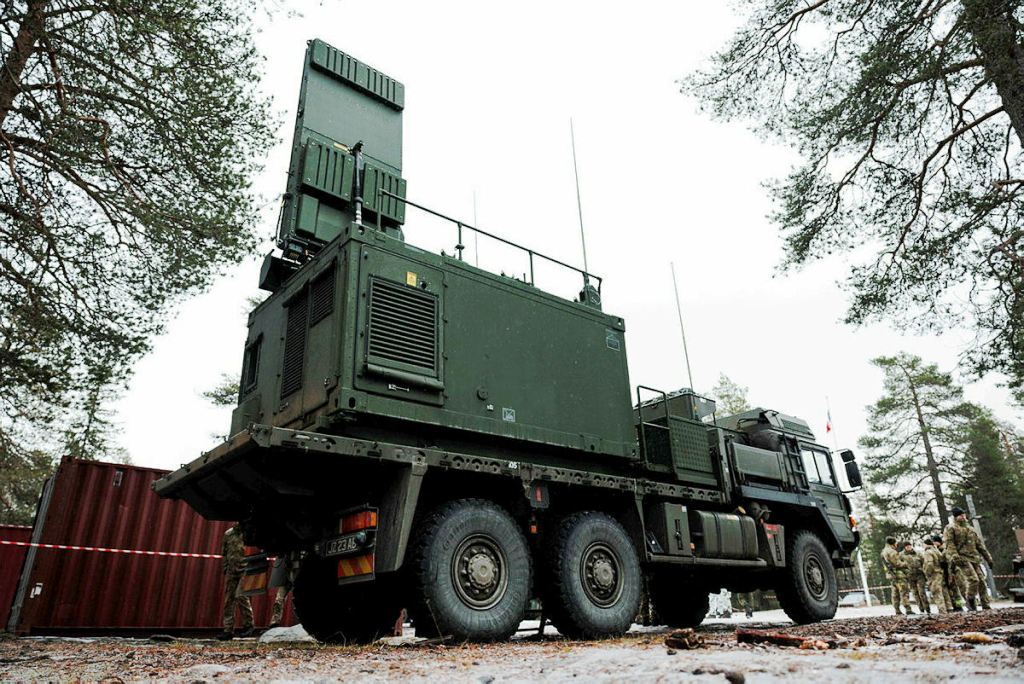A major drive towards national self-reliance in defence and aerospace, has resulted in Türkiye’s domestic arms industry now being able to deliver not only almost all materiel required by its own armed forces, but also major systems for many international clients.
Türkiye’s change from being a major defence-equipment importer to one of leading international defence and aerospace exporter has taken less than a quarter of a century to accomplish, including achieving preferred-supplier status among several of its overseas clients. This article takes a look at some of the key defence export programmes currently helping to underpin the country’s new standing as a major defence exporter.
Transformation
Before exploring some of these export programmes, however, the country’s transformation from defence importer to leading materiel exporter is worth a few more words. In the early 2000s, some 80% of the Turkish Armed Forces’ inventory consisted of equipment from overseas suppliers, a figure, which fell to around 20% by the start of 2024 and with a further 5% decrease in defence-import reliance an ongoing and latest government intention.
While this process has been ongoing for some time, a recent accelerant for change has been Ankara’s souring relations with the US on the defence front, having, for example, been denied F-35s and PATRIOT missiles, and with materiel imports overall from the US having dropped over 80% between 2016 and 2020. However, this state of affairs led to Türkiye’s own military-industrial ecosystem gradually coming into its own, with programmes over the past 10-15 years delivering fully indigenous aircraft, unmanned aerial vehicles (UAVs)/drones, armoured fighting vehicles (AFVs), artillery systems, missiles, rockets and naval vessels, to name just some.

Accompanying this deliberate reduction in import reliance has been an equally impressive and ongoing increase in defence and aerospace exports; in FY2023, for example, these reached USD 5.5 billion, rising to almost USD 7.2 billion in 2024, the latter exceeding the USD 6.5 billion target set by the government for the year. Posting on X in January 2025, Secretary of the Turkish Defence Industries Agency (SSB), Prof. Dr. Haluk Görgün, stated that the latest export growth involved almost 300 different defence systems destined for 185 countries, with latest export figures reflecting Türkiye’s “self-written vision of independence in the defence industry” and the building of its “ground-breaking ecosystem in technology exports for the future”.
Only three months later, in March 2025, figures from the Turkish Exporters Assembly (TıM) indicated that the month’s exports had exceeded those for March 2024 by 147%, reaching USD 884 million, a monthly record for the nation’s defence and aerospace industry. Here, it is worth examining some of the systems filling Türkiye’s export order books.
Combat-proven drones
Highlighted by their use against Russian armour in Ukraine, one of the most high-profile Turkish defence exports has been the Bayraktar TB2 strike unmanned aerial vehicle (UAV), produced by Baykar Technologies. This UAV was actually in Ukraine’s inventory before Russia’s full-scale 2022 invasion in 2022; a November 2018 contract led to Ukraine possessing a fleet of around 20 available by the start of 2022. In the opening few weeks of Russia’s full-scale invasion Ukraine released some of the most impressive ‘sales videos’ for TB2 as the drones destroyed numerous Russian vehicles, and aerial images showed winding convoys of stranded and destroyed tanks, as the invading forces attempted to reach Kyiv. Footage of TB2 strikes then slowed dried up completely as Russian aircraft and air defences took their toll on Ukraine’s fleet.
By around March 2025, further Bayraktar TB2s, some donated, some heavily discounted, and some crowdfunded by allied nations, began delivery, estimated at around 30-35. Since then, following 2023 licensing agreements with Kyiv for Baykar to manufacture drones in Ukraine, the construction of a TB2 and/or TB3 manufacturing plant in the Kyiv Oblast began in February 2024. According to Baykar CEO, Haluk Bayraktar, the facility is due to be complete and commissioned in August 2025, with an eventual annual production capacity of 120 units of whichever drone variant is eventually selected to be produced there. If it’s the more advanced TB3, while similar in shape and design, its folding wings enable it to be deployed from light aircraft/UCAV carriers and universal landing craft.

In February 2025, Baykar stated that 90% of its 2024 revenues, or USD 1.8 billion, had been generated from exports, as well as 83% of its total revenues since it began its UAV R&D programme in 2003, having also derived from export sales. The company is now one of Türkiye’s top ten defence and aerospace exporters. Indeed, according to Baykar, one third of all exports from the country’s defence and aerospace sector in 2023 were UAVs and related equipment from Baykar alone, though its 2024 contribution was down to one quarter. Nevertheless, the company says this input from Baykar still maintains Türkiye’s place as a leading global exporter of UAVs – a position it has, reportedly, held for four years – ahead of China, Israel, and the US. Indeed, Baykar cites a September 2024 ‘Center for a New American Security’ report, in which Türkiye is said to control 65% of the global UAV export market.
With several UAVs in development and/or under production at Baykar, the company’s role as the nation’s leading indigenous UAV maker has also led to its place, according to a company statement, as “the largest UAV exporter in the world,” with exports accounting for 97.5% of its current order books. So far, the Bayraktar TB2 and Bayraktar Akinci UAVs have been delivered to 35 countries in total, with the TB2 entering the inventories of 34, and the Akinci, ten of those.
Bayraktar TB2s have now been supplied to six NATO Allies and four EU member states, including Albania, Croatia, Poland, and Romania. Other Baykar UAV exports include Akincis exported to the UAE at the start of 2024, and unspecified Bayraktar platforms sent to Azerbaijan, Kenya, the Maldives, Mali, Morocco, and Pakistan during the same year.
Notably, a large portion of Baykar exports have gone to customers in the Middle East and Africa (MEA); a trend which broadly holds true for many other players within Türkiye’s defence ecosystem.
Türkiye’s major MEA focus for key exports and collaborations
The Middle East and Africa have always been important to Türkiye, with its current defence export activities in the region certainly underlining that status. Indeed, the USD 370 million Kuwait deal for Baykar’s TB2, referenced above and announced in June 2023, was not the first Bayraktar TB2 export to the region; these drones were previously bought by Qatar and the UAE in 2018 and 2022, respectively. These regional successes for Baykar, however, are merely the tip of a potential MEA export iceberg for Türkiye, which, although it has defence agreements already established with five of the six Gulf Cooperation Council (GCC) States, wants to further increase its exports to the region and usurp GCC dependence on current US and European suppliers. That said, GCC members, the Kingdom of Saudi Arabia (KSA), Qatar, and the UAE, have indicated their intention to build their own comprehensive defence industrial capabilities. While that might not bode well for Turkish exports into those markets over the long-term, Türkiye’s own experience in attaining close-to self-reliance in defence manufacture, may result in close cooperation and the export of technologies and know-how in the near-to-medium term, nevertheless.
In the meantime, Turkish delegations have been actively pursuing numerous other export contracts for vehicles, vessels, ancillary systems such as radar, and more, across the region. In early 2024, the World Defence Show in the KSA played host to some 40 Turkish companies, under the watchful eyes of the SSB and the Turkish Defence and Aviation Industry Exporters’ Association; between them, they showcased armoured vehicles, artillery systems and ammunition, logistical and support vehicles, as well as manned/unmanned air, land and sea platforms – UAVs included – as well as a wide range of electronics, communications and radar systems, and more. Leading industry players, included Aselsan, Baykar, BMC, Fergani Space, FNSS, Havelsan, MKE, Roketsan, Turkish Aerospace, as well as Türkiye’s Anadolu and Yonca Shipyards.
This major show of Turkish interest in the region as an export destination, followed a 2023 visit by a Turkish defence-industry delegation to the KSA, during which major contracts were signed between certain Turkish companies and the Saudi Government. The most prominent deal was that between the KSA and Baykar Technologies for an unspecified number of Akinci UCAVs, along with technology transfer to enable local manufacture and training and support. With a reported USD 3 billion price-tag, the agreement was said to be the largest aviation and defence export deal in Turkish history, with the Saudis becoming a leading user of Turkish materiel in one fell swoop.

As well as drones, the region is also the destination for several other key Turkish platforms, with some 50% of Turkish defence exports into the Middle East between 2018 and end 2022 going to Oman, Qatar and the UAE. Indeed, since around 2015, Oman has become one of the region’s main users of Turkish armoured fighting vehicles (AFVs) including FNSS’ Pars III 8×8. Türkiye’s armoured vehicle maker, BMC, meanwhile, (a long-time Turkish-Qatari joint venture since the Qataris acquired a 49% stake in the company in 2013), is busy building Türkiye’s first domestic main battle tank (MBT), Altay, for which the Qatari’s themselves signed a contract in Q1 2019 for 100 units to be delivered by the end of 2025. The tank design draws substantially on South Korea’s K2 Black Panther, albeit with heavier armour, marginally longer body, and use of Turkish domestic subsystems. Türkiye itself is expecting first deliveries of the MBT in August 2025, though, as yet, only some ten Altays, including two earlier prototypes for Qatar, have rolled off the production lines; the remaining 98 for the Qataris have yet to be received.
From land to sea
Staying with Qatar, back in Q1 2024, after six years of intense negotiations, Türkiye’s Dearsan shipyard delivered two fast attack craft for the Qatari Emiri Navy. As well as the vessels themselves, onboard sensors and weapon systems are also, for the most part, Turkish-made and include systems such as Aselsan’s MAR-D, a 3D naval search radar, and its Ahtapot optronic sensor (the largest of the SeaEye family), along with Roketsan’s 150 km range Çakır cruise missiles, and its Sungur man-portable air-defence system (MANPADS).
Turkish shipyard capabilities may also eventually play their part in satisfying current, rumoured Middle Eastern interest from the KSA and possibly the UAE for a Light Aircraft/UAV Carrier, similar to Türkiye’s own drone and helicopter assault landing ship, TCG Andalou, built by Sedef Shipbuilding in Istanbul in collaboration with Spain’s Navantia, although further details of an emerging major maritime export programme along these lines are yet to take shape.

What has materialised on the naval side, involving customers outside of the Middle East, has been the construction of Türkiye’s Ada lass corvettes by various Turkish shipyards, including ASFAT, Istanbul Naval Shipyard (INSY), and STM for Malaysia, Pakistan and Ukraine. Pakistan took delivery and commissioned the first ship in July 2024 having originally contracted with INSY in 2018 for two Ada class vessels to be built in Türkiye, while a further two are being built in Pakistan, where they are known as Babur class ships and optimised for anti-surface warfare and anti-air warfare, rather than the Ada class’ traditional anti-submarine warfare role. Malaysia contracted with Türkiye in mid-2024 for three ships, due for completion in 2028, with the keel laying for the project conducted in April 2025. The same month shipbuilder, STM, also showcased the new corvette at the 2025 Langkawi International Maritime and Aerospace (LIMA) expo in Malaysia.
As for the Ukrainian deal, this was originally signed for two vessels at the end of 2020 and valued at USD 253 million. Those ships – the Hetman Ivan Mazepa and the Hetman Ivan Vyhovskyi – have now been built by STM with Ukrainian support. Ivan Mazepa was launched in October 2022 and is now with the Ukrainian Navy and the second vessel was launched in Istanbul in August 2024 and is set for its maiden voyage during 2026 and handover in early 2027. According to a July 2024 report in Naval News, Ukraine’s Ambassador to Türkiye, Vasyl Bodnar, suggested, in 2023, that a further two corvettes may be ordered from Türkiye under this current programme, although no further details have been confirmed at this time.
Towards an export future
Of all the aerospace systems manufactured by and/or in development with Turkish Aerospace Industries (TAI or Tusaş), many of which have been and continue to be exported, there is one stand-out ongoing programme, which began in 2016, though is still at prototype stage, and that’s the Kaan National Combat Aircraft (MMU), Türkiye’s first 5th-Generation fighter aircraft. It’s a project, which is also undoubtedly intended to be a major, future Turkish export and which has already attracted considerable international attention, both in terms of potential customers, as well as potential partners.

Kaan’s runway to serial production, however, is not yet cleared, with obstacles such as final serial production engine choice to be decided, as well as uptake by the Turkish Air Force, which itself will be a major determinant to export success. To date, however, overseas interest and participation includes Azerbaijan, which has been collaborating with TAI on the project since 2023, as well as further overseas partnering interest expressed in February 2025 by the UAE. Discussions between President Prabowo Subianto of Indonesia and President Recep Tayyip Erdoğan when the latter visited the Indo-Pacific nation in February this year, also touched upon interest to collaborate on Kaan.
The month before, the KSA Defence Ministry had reportedly expressed interest in procuring 100 Kaan fighters, though further details are unavailable at this time. That said, in February 2025, at the IDEX exhibition in Abu Dhabi, Mehmet Demiroglu, TAI’s CEO, told the Middle East Monitor, that, as well as the second and third Kaan prototypes expected ready end 2025 and early 2026, respectively, the KSA was now also on the list of collaborators actively working on the project, with the UAE potentially to become the next, following “high-level discussions”. So, while Kaan’s immediate future may be unclear, growing global support, especially from GCC nations, bodes well for the aircraft, both domestically and its export prospects.
Closing thoughts
While major programmes, are certainly playing their part in Türkiye’s ongoing defence-export growth, (though only a few of which have been mentioned above), it is equally, at least, down to the overall drive to achieve President Erdoğan’s goal of self-reliance in ‘all things’ defence and aerospace, that has led the country’s domestic defence industry being able to offer a wide range of products for tri-service applications on the international stage. This, in turn, has led Türkiye to becoming a major player on the defence export scene, and one which continues to expand both the range and sophistication of its products on offer.
Tim Guest
Author: Tim Guest is a long-time defence and aerospace journalist, UK Correspondent for ESD, and a former officer in the British Armed Forces.



